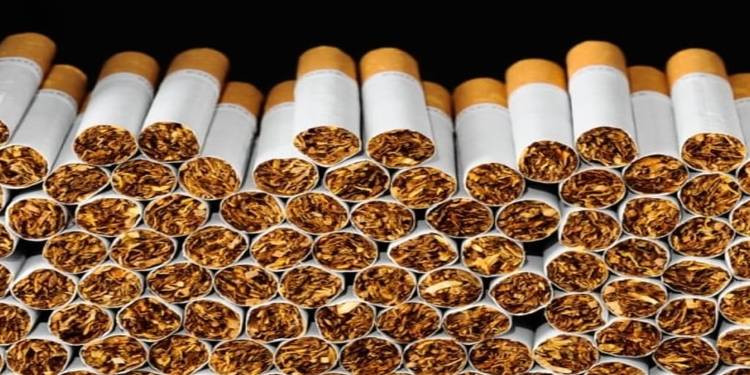
The prevalence of tobacco use in Pakistan has reached alarming levels, with approximately 31 million adults, or about 19.7% of the adult population, currently consuming tobacco products. The consequences of this habit have severe implications for both public health and the economy, as tobacco use remains the leading cause of death due to non-communicable diseases (NCDs) such as cancer, chronic respiratory diseases, and cardiovascular ailments.
In a recent study funded by the World Health Organization (WHO) titled "Raising Tobacco Tax Rates to Promote Public Health and Increase Revenue: Policy Options for Budget 2022-23," it was revealed that tobacco use resulted in an estimated 337,500 deaths in 2022 alone. The burden falls disproportionately on poorer households, as they spend a larger proportion of their budget on tobacco, thereby leaving less room for essential needs.
One concerning trend identified in the study is the affordability of cigarettes, which has increased due to low tobacco taxes and the absence of tax hikes from July 2019 till February 2023. The average excise tax rate in Pakistan stands at around 45% of the retail price, falling short of the widely accepted benchmark of 70%. The researchers found that raising excise taxes on cigarettes by 30% would lead to a reduction of 200,000 smokers and increase excise tax revenue by at least 25%.
The IMF projections reveal that Pakistan's nominal per capita income witnessed a 12.7% increase in 2020-21 and is expected to grow by over 11% in the following two years. Simultaneously, inflation is expected to surpass the 9.2% target for the current fiscal year. However, the retail prices of cigarettes have remained constant since July 2019, which means that cigarettes will become even more affordable in the upcoming years if excise tax rates remain unchanged.
Based on estimates from the Social Policy and Development Centre (SPDC) using IMF projections, approximately 4% of per capita income was required to purchase 2000 cigarettes in 2020-21. This figure is anticipated to decrease to 3.6% in 2021-22 and further decline to 3.2% in 2022-23 if cigarette prices remain stagnant.
Raising taxes on tobacco products through excise tax increases has been proven as the most effective method to reduce tobacco use. Higher prices act as a deterrent for youth initiation and encourage current smokers to quit. The study recommends raising tobacco excise to Rs 154 for low-price cigarettes and Rs 385 for high-price cigarettes. This policy change would result in 200,000 fewer smokers, a 1.2% reduction in smoking prevalence among adults, a 1.23% reduction in smoking intensity among adults, the saving of 200,000 lives, and an additional total FED revenue of Rs 27.4 billion—an increase of at least 25.1%.
Addressing the issue of tobacco use in Pakistan requires urgent action from the government to prioritize public health and generate additional revenue. By implementing these recommended policy changes, the country can make significant progress in curbing the detrimental effects of tobacco consumption, saving lives, and securing a healthier future for its citizens.
In a recent study funded by the World Health Organization (WHO) titled "Raising Tobacco Tax Rates to Promote Public Health and Increase Revenue: Policy Options for Budget 2022-23," it was revealed that tobacco use resulted in an estimated 337,500 deaths in 2022 alone. The burden falls disproportionately on poorer households, as they spend a larger proportion of their budget on tobacco, thereby leaving less room for essential needs.
One concerning trend identified in the study is the affordability of cigarettes, which has increased due to low tobacco taxes and the absence of tax hikes from July 2019 till February 2023. The average excise tax rate in Pakistan stands at around 45% of the retail price, falling short of the widely accepted benchmark of 70%. The researchers found that raising excise taxes on cigarettes by 30% would lead to a reduction of 200,000 smokers and increase excise tax revenue by at least 25%.
The IMF projections reveal that Pakistan's nominal per capita income witnessed a 12.7% increase in 2020-21 and is expected to grow by over 11% in the following two years. Simultaneously, inflation is expected to surpass the 9.2% target for the current fiscal year. However, the retail prices of cigarettes have remained constant since July 2019, which means that cigarettes will become even more affordable in the upcoming years if excise tax rates remain unchanged.
Based on estimates from the Social Policy and Development Centre (SPDC) using IMF projections, approximately 4% of per capita income was required to purchase 2000 cigarettes in 2020-21. This figure is anticipated to decrease to 3.6% in 2021-22 and further decline to 3.2% in 2022-23 if cigarette prices remain stagnant.
Raising taxes on tobacco products through excise tax increases has been proven as the most effective method to reduce tobacco use. Higher prices act as a deterrent for youth initiation and encourage current smokers to quit. The study recommends raising tobacco excise to Rs 154 for low-price cigarettes and Rs 385 for high-price cigarettes. This policy change would result in 200,000 fewer smokers, a 1.2% reduction in smoking prevalence among adults, a 1.23% reduction in smoking intensity among adults, the saving of 200,000 lives, and an additional total FED revenue of Rs 27.4 billion—an increase of at least 25.1%.
Addressing the issue of tobacco use in Pakistan requires urgent action from the government to prioritize public health and generate additional revenue. By implementing these recommended policy changes, the country can make significant progress in curbing the detrimental effects of tobacco consumption, saving lives, and securing a healthier future for its citizens.

